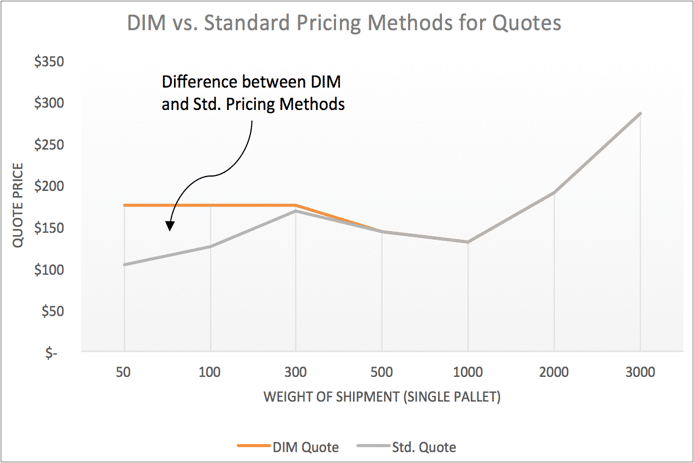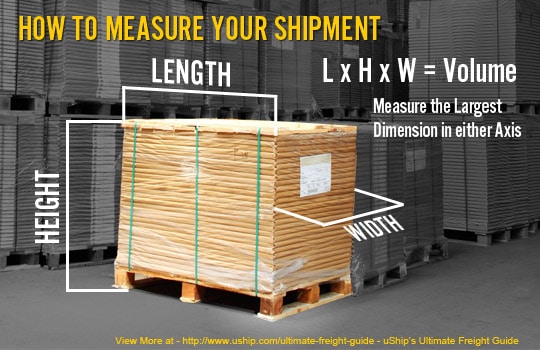By Sandra Beckwith, Inbound Logistics / Carriers and 3PLs reveal road-tested secrets for cutting trucking costs. /
While many shippers believe that the best way to save money on transportation is to negotiate lower rates with carriers, trucking companies and third-party logistics (3PL) providers acknowledge there are better and more effective ways to cut trucking expenses, particularly for less-than-truckload (LTL) shipments.
Less-than-truckload shipments refer to relatively small freight deliveries that are too large to be classified as parcels and too small to fill a truckload. Carriers typically think of LTL freight in terms of weight—usually between 150 and 20,000 pounds—but size can factor in, too.
It’s an important business for carriers, one that saw revenues increase 7.5 percent in 2014 but drop 1 percent in 2015 to $35 billion, according to a study by SJ Consulting Group. That drop was due to a decrease in fuel prices, not shipping volume, according to Satish Jindel, president of SJ Consulting.
All but about $3 billion of that revenue runs through the top 25 LTL carriers, starting at the top with Fedex Freight and ending with LME.
Because many less-than-truckload shipments move from small and mid-size businesses that lack sophisticated logistics or transportation departments, shippers are often not knowledgeable about how to ship efficiently or cost effectively, or how to cut expenses without complicated negotiations with carriers.
“You can only negotiate pricing down so far with carriers,” says Greg West, vice president of LTL at Minnesota-based 3PL C.H. Robinson. “Today, it’s really about what a shipper can do from a process perspective.”
Inbound Logistics talked to carriers and 3PL providers about sure-fire ways to save money on LTL shipments, and came up with a list of 18 tips that will benefit shippers of all types and sizes. We grouped the tips according to category to help you find those most relevant to your business.
PRICING
LTL pricing is complicated. Shippers that select a carrier based on rates alone are often surprised to discover that the final bill includes fees and surcharges they hadn’t known about or anticipated. What’s more, some carriers include freight classifications in their rates, while others don’t. Because of that, getting the best price possible can require more knowledge than some shippers have on staff.
“About 30 percent of freight invoices have some type of correction for weight, dimensions, class, or cubic feet,” says Jim Bramlett, senior vice president of small business shipping at uShip.com, an online shipping marketplace. “And that’s way too high.”
You can sidestep some of these pricing dilemmas with the following tips.
1. Avoid surprises by knowing as much about your shipment as the carrier does.
“What most shippers don’t understand is that we truly measure the work we do for them,” says Randy Swart, chief operating officer of A. Duie Pyle, a transportation and logistics provider based in West Chester, Pa. “When they’re inefficient, it comes back as part of their cost.”
Carriers use dimensioning machines and forklift scales that measure and weigh every pallet. If your documentation doesn’t match their calculations, you’re charged an administrative fee to make the correction. In addition, it will cost more if a shipment is heavier than you calculated or takes up more space than expected.
2. Focus on the net cost.
When comparing carriers as part of the decision-making process, shippers often look just at rates and not the associated fees that factor into the total expense.
“Carrier B might include a lot of additional fees that can increase periodically,” says Ken Weinberg, co-founder of transportation management software company Carrier Logistics Inc., New York. “If all you’re looking at is rates, you’re not making a proper comparison.”
Discounted rates can be misleading, too. “When some shippers get a discount, they think it’s a great deal, but there are so many other factors to consider, including the fact that list price base rates vary from carrier to carrier and from lane to lane,” says Scott Frederick, vice president of marketing at Erie, Pa.-based Logistics Plus.
That’s why the 3PL focuses on the net rate rather than on discounts and base rates.
“We want to know the bottom line: What’s the cost to transport this shipment from Point A to Point B?” Frederick says.
3. Look for a carrier with simple pricing.
FedEx recently introduced the simplified FedEx Freight Box, which provides packaging and flat-rate pricing based on delivery zones. Shippers select from two sizes of corrugated boxes—the larger one fits on a pallet while the smaller one includes a pallet that’s built in. Fill it with anything except hazardous materials, keep it less than 1,200 pounds, and you’ll know what your costs will be up front.
“Pricing complexity leads to confusion and time spent re-doing paperwork, all of which can cost shippers—especially small businesses—money,” says Mike Rude, director of freight solutions marketing at FedEx.
Premier Freight Management Corporation, a large-item LTL specialist in western Michigan near several major furniture manufacturers, bases fees only on the amount of space a shipment takes on the trailer and the distance it’s traveling.
“It’s much simpler for the customer than the typical LTL carrier pricing structure based on national motor freight classifications,” says CEO Doug Walcott, adding that much of what his company ships nationwide is pad- or blanket-wrapped.
4. Understand the carrier’s rules as they apply to pricing.
“Carriers tell us what they like to do and don’t like to do through pricing,” says Bramlett. For example, many carriers charge as much as $400 extra for residential delivery, which can be a significant issue in consumer e-commerce deliveries. Bramlett recommends delivering residential shipments to a terminal instead, and arranging for less-expensive transportation to the residence from there.
Some use freight classifications; some don’t. Yet even freight classification is negotiable, according to Frederick.
“For example, a company might ship a lot of a dense, heavy product that’s class 50, but occasionally ships something lightweight that is technically a more expensive class 150,” he says. “If they’re shrewd, they’ll negotiate so that everything they ship is classified as 50.”
This more hybrid classification known as “freight all kinds”—or FAK—provides the shipper with more predictability in the rate structure it uses when charging customers for shipping. Less variability also reduces overall transportation expense.
5. Go outside a carrier contract to look for potentially less-expensive spot pricing.
While a contract often makes sense and can act as a hedge against rate increases, the market changes regularly and prices can go down, too.
“Carriers gain and lose customers all the time and that impacts their flow,” says Bramlett. “If they lose a big customer in one area, they can advertise that they’re looking to fill that space.”
PACKAGING
“Customer surveys show that the top shipper concern isn’t price or speed,” says Grant Crawford, president of less-than-truckload at Roadrunner Transportation Systems, Cudahy, Wisc. “It’s the condition of the shipment at its destination.”
Proper packaging can cut expenses associated with claims as well as shipping fees.
6. Shrink wrap the freight to the pallet.
“A lot of people working in shipping rooms shrink wrap the freight separate from the pallet instead of protecting the combined integrity of the freight and the pallet,” Swart says.
When the freight isn’t attached to the pallet, it can slide and get damaged, which delays delivery and costs money in claims.
7. Protect your shipment so that a pallet can be stacked on top of it.
Some shippers protect fragile products by placing a pyramid on top that prevents stacking. That interferes with trailer volume efficiency, so the shipper is charged for the space above the pallet.
Replace that pyramid with a protective layer on top of the shipment that allows for decking that supports stacked weight. If that’s not an option, Swart says, carriers including A. Duie Pyle will load the pallet on top of others so nothing gets stacked on it. To facilitate that, he recommends adding large FRAGILE signs to the shrink-wrapped bundle on the pallet in addition to stating that it’s fragile on the bill of lading.
“When loading freight, dock workers look at the packaging, not the bill of lading,” he says.
8. Maximize the space on the pallet.
Pack to the pallet edge and to the height requirement. If the carrier says pallets must be six feet high, you will pay for those six feet, even if you use only four of them. Similarly, if cartons extend past the edge of the pallet, there will be an additional fee for taking up extra space.
Maximize the shipment’s density as well. “LTL carriers profit by fitting as many shipments into one trailer as possible,” says Stacey Howell, vice president of LTL at Trinity Logistics, a Delaware-based 3PL. “To save money, pack your product more densely with as little space between cartons as possible.”
CARRIER SELECTION
Each carrier offers strengths or specialties. Some provide national service, others are regional only. Some promise next-day delivery while others are “economy” carriers that need more than one day to deliver a product but charge less for it. Selecting a carrier that specializes in the type of service you need saves money.
Howell recommends knowing what’s important to you and selecting accordingly. “Some shippers don’t care about price—they care about service,” she says. “Others want the cheapest rate no matter what. Understanding your priorities can help guide your decisions.”
9. Factor distance into the decision.
Do you need a carrier with nationwide or regional distribution? Roadrunner Transportation is a national economy carrier while A. Duie Pyle serves only the Northeast region with next-day delivery.
10. Don’t presume that consignees need next-day delivery.
Next-day delivery is a premium-priced service, so don’t pay for it unless it’s necessary. Ask customers when they need their shipment. If it isn’t next day, consider a less-expensive carrier that will take a day or two longer.
Knowing when freight actually needs to be delivered can help companies save by shipping less frequently. “Our system is set up to deliver the next day, but if you’re shipping to a customer on Monday and they don’t need it until Wednesday, you can aggregate your orders to them and ship less frequently,” says Geoff Muessig, executive vice president and chief marketing officer at PITT OHIO, Pittsburgh.
11. Pay attention to carrier specialties.
Carriers aren’t all things to all shippers so it’s important to select one that can meet specific needs.
For example, some products—particularly those that are being installed—need to be delivered by appointment so delivery is timed to an installation team’s schedule. And because many LTL carriers don’t like making residential deliveries—many of which also need to be by appointment because of shipment size—they charge shippers a steep premium for that destination category and service level because they’re not set up for it.
12. Capitalize on imbalances in a carrier’s network.
A headhaul lane for a carrier is one in which trailers are running full. It costs more because the carrier doesn’t need the business in that lane. Because the opposite is true for a backhaul lane, shippers can often get a better rate because the carrier has space to fill.
“Understand the carrier’s backhaul needs and try to fill them while steering away from headhaul lanes,” advises Muessig. “Minimize those imbalances—don’t exacerbate them.”
13. Know what your shipment is insured for on that carrier, and if you need high-value insurance, purchase it separately.
“We just had a situation where a damaged shipment valued at $8,000 was only covered for $1,400 because the shipper didn’t understand the carrier’s liability,” says Frederick. “When clients are in this situation, we also advise them to purchase excess coverage separately, or to let us do it for them, because carrier rates are higher.”
CONSOLIDATION
Consolidating, which can take many forms, can lead to significant savings.
14. Consolidate orders.
When Logistics Plus analyzes a new client’s freight bills, it often uncovers multiple shipments to the same location in one day.
“The order comes up, an automatic system processes it, and a carrier picks it up,” says Frederick. “Change that system so that you consolidate those orders into one daily shipment rather than several.”
15. Consolidate divisions and facilities.
Similarly, when consulting recently with a new client that was shipping from multiple facilities, Logistics Plus recommended centralizing shipping decision-making to leverage its collective volume for a better discount.
“In many cases, a company ships low volumes from multiple locations and decision-makers have other responsibilities, so they aren’t up to speed on specifics such as whether they need a national or regional carrier,” says Frederick. “Bringing that function under one person helps the company make smarter, more cost-effective choices.”
Rude agrees, noting that FedEx lets shippers earn volume discounts by bundling their parcel and freight shipments.
16. Form a consortium or consolidation program with other local companies delivering to the same location.
When companies in the same area collaborate by coordinating deliveries to the same destination, such as a distribution center, they create larger average shipment sizes with the potential to reduce handling, transit times, and costs—particularly when shipments can jump from LTL to full truckload rates.
“Consortiums can be tricky, though, especially when personnel changes occur,” cautions West at C.H. Robinson, adding that many use this approach through 3PLs, which have the scale to manage the complexities.
TECHNOLOGY
LTL shipments at smaller companies are often scheduled by one-person shipping departments, receptionists, administrative assistants, or others who lack the training, knowledge, or access to information that enable them to make the most informed decisions possible. Access to technology can transform that.
17. Work with a 3PL.
Companies lacking logistics managers or others with appropriate training often contract with a 3PL that can help them find or negotiate the best rate, identify the correct freight class, and audit invoices.
“If I worked for a small or mid-sized business, I’d look at the technology 3PLs can provide, how they can save money on transportation costs right out of the gate, and the stable of carriers they’re partnering with,” says Crawford.
18. Use a carrier’s transportation management system.
uShip.com‘s web interface lets shippers view carriers servicing a specified lane plus their rates, advertised transit times, and customer feedback, among other key details. And customers are encouraged to integrate their systems with FedEx’s to streamline managing orders and preparing shipments while also saving on labor costs associated with certain back-office functions.
The message to shippers is clear: Focus on the process in addition to rates to save the most possible on LTL shipments.
Original Inbound Logistics story found here.



